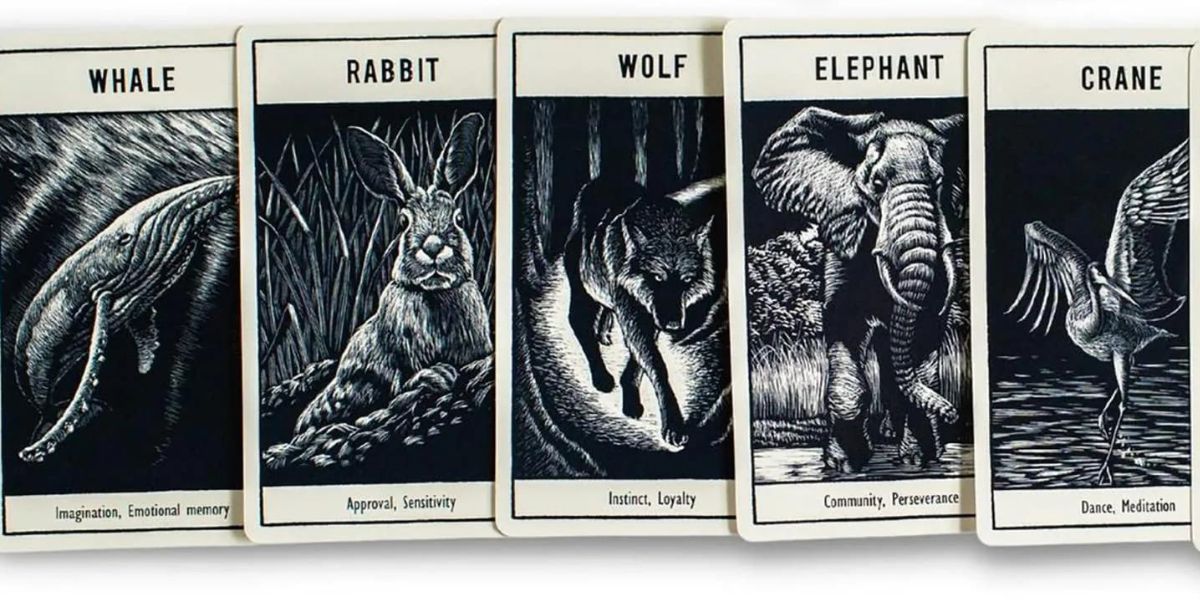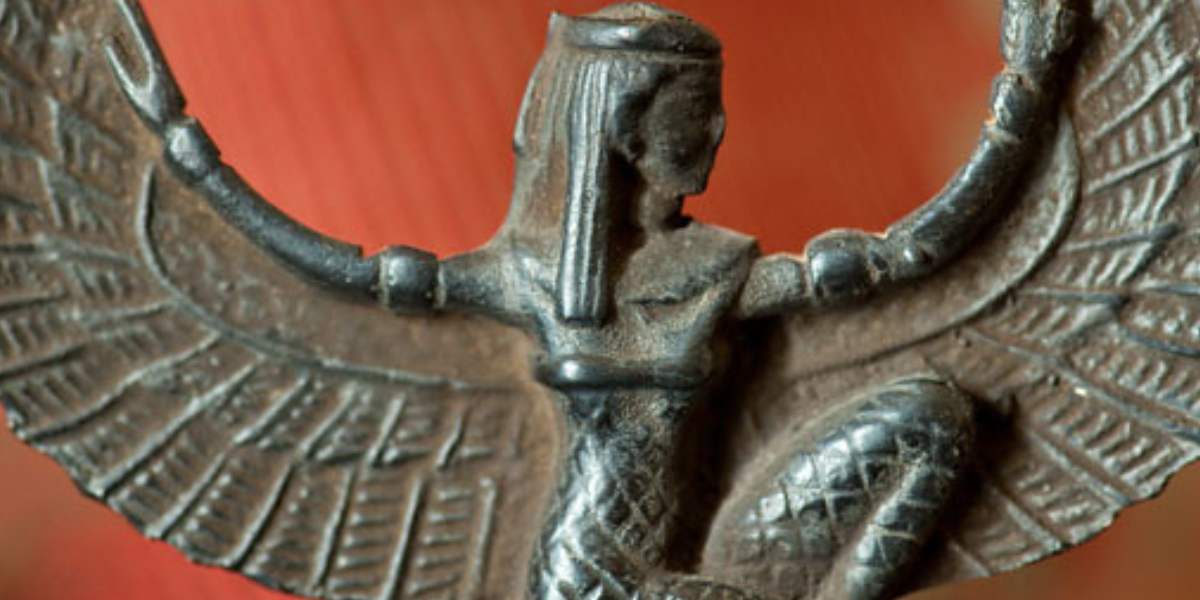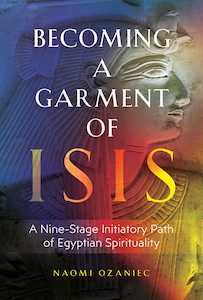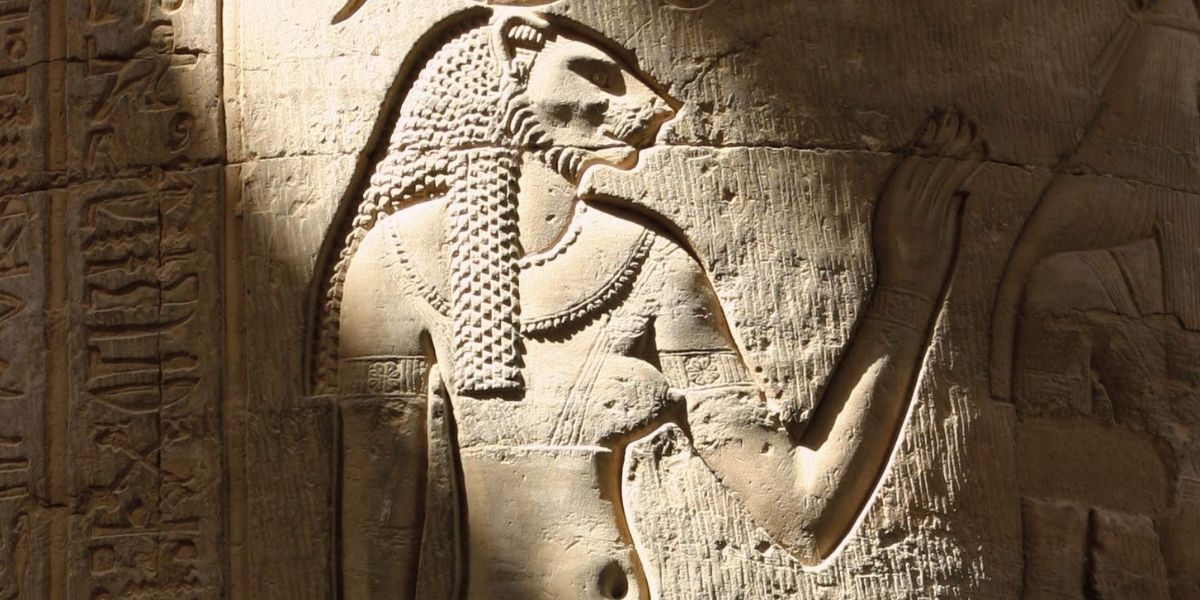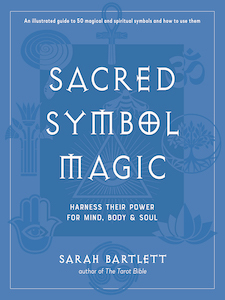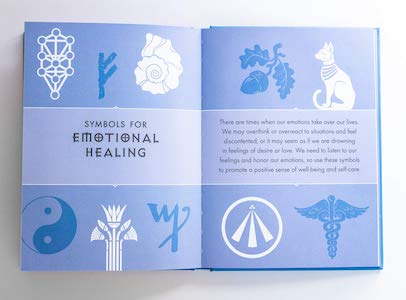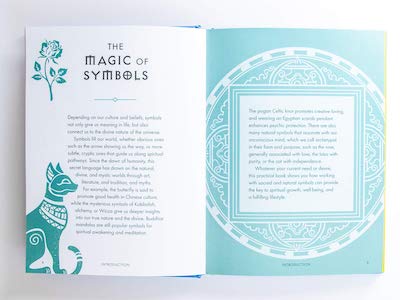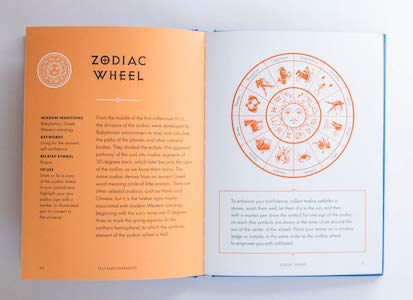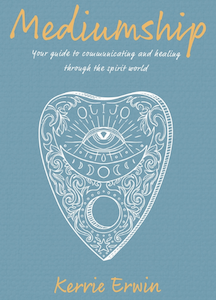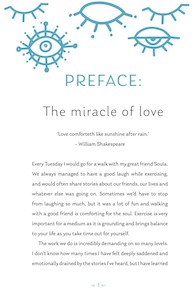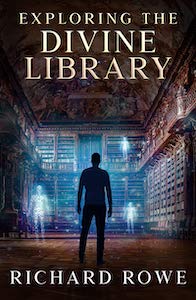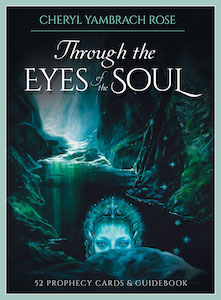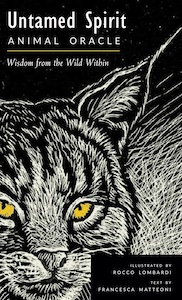
Untamed Spirit: Animal Oracle, by Francesca Matteoni and illustrated by Rocco Lombardi
Red Wheel, 978-1590035313, 112 pages, 50 Cards, August 2022
“This oracle of sacred animals is intended principally as an invitation to carefully explore and observe the fellow inhabitants of this planet: the beings that run, slither, jump, fly and swim around us and with us. It is an invitation to explore your own untamed spirit, the wisdom from the wild within.”1
Untamed Spirit: Animal Oracle, by Francesca Matteoni (author) and Rocco Lombardi (illustrator), is a visually stunning deck that may be used for its intended oracular purposes as well as a contemplative tool of alignment with the creatures of the natural world. The size of both deck and book of interpretation makes it an easy travel companion on those explorations into the forests, oceans, mountains, and caves that the animals and we call home.
This oracle deck features a 50-card deck and 122-page guidebook, neatly packaged in a drawer-like printed box. The deck, box, and booklet are hand drawn images that are hues of black, gray and whites. I like this approach as it provides the reader with clean imagery that is neither distracting nor over laden with bursts of color or symbology that is unnecessary.
The dynamic guidebook describes the origin of each animal’s sacred nature along with a chart that lists its element, where it lives, zoological information, an affirmation of mystical/spiritual energy of calling, symbols associated with it, and a brief charm to ask the animal for advice or guidance. Then each of the 50 cards features a message specific to the animal represented, and the back of each oracle card is adorned with a black and white peacock feather.

The information relating to each of the oracle cards is thoughtfully organized by the element naturally associated with the animal (Earth, Air, Water and Fire) rather than alphabetically. Some readers may find this a bit clumsy, however, I had a sense that it was purposeful in adding another layer of thought and identification for the reader. This table of contents neatly spans two pages and the entire number of animals represented within the deck fits easily, providing the reader an “at a glance” view to find their card(s).
I immediately went to the card and interpretation regarding the Swan, my favorite guide from early days of being a professional ballerina and my admiration of Anna Pavlova:
“The swan hour strikes when worlds touch. I lift myself up from the water into the frigid air. I carry with me the divine spark that is in every living being and return it to the sky. The swan hour is the hour in which the soul emerges. Everything is pure.”2
I have come across many different interpretations of the swan, but this interpretation added another layer of depth to the majesty and intention of swan’s energy; that of the fires of the divine shining from within. Matteoni presents a description of grace as well as the recognition of the awkwardness of the cygnet, whose visage and movements do not give rise to this fledgling’s transformation into an ethereal creature. The image of the Swan crafted by Lombardi is both beautiful and evocative of the duality of form of this creature, being neither in the light and not of the dark but moving through a space that is the compilation of both.
My second card was drawn randomly, after asking “What is my focus in the present time?”. Not surprisingly, my subconscious immediately sought out the Bee:
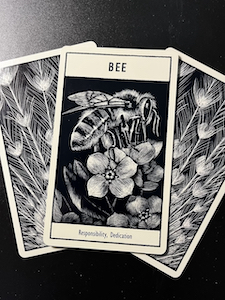
“I am the alchemist of the word. I transform the nectar of flowers into fruit. In my home, I produce golden honey. My buzzing is the sound of all that is regenerated. I dedicate my work to the great universal mother. I am responsible for what I create.”3
As I read the interpretation, I am reminded that the Bee is part of a collaborative matriarchal society that carries great responsibility within the animal world. Though small, it is mighty in what it can produce and create that is both nourishment and healing. The key words Matteoni uses for the Bee on the card are “responsibility” and “dedication”. This card spoke to me at a personal level of my work within the community as an Elder and High Priestess of the Assembly of the Sacred Wheel Tradition, as mother of five, wife of 46+ years and my responsibilities as an Admin. Assistant within a diverse school district. Busy bee indeed!
Overall, Untamed Spirit: Animal Oracle is a refreshing offering that stands apart from the colorful and graphic laden decks that are in abundance. The simplicity of interpretations provided and the depth of the black and white imagery make this oracle deck a perfect choice for those less familiar with using an oracle system, creating a user-friendly format to explore the mystical aspects of organic life. This is a deck that will be returned to frequently by novice and expert alike. With each new exploration, it will catalyze within its user a call to the stream of animal spirit that resides within all sentient life on our planet.

Robin Fennelly is an Elder within the Assembly of the Sacred Wheel Tradition [www.sacredwheel.org]. She is a dancer, teacher, astrologer, author, ritualist and seeker of all things of a spiritual nature. Her writings and classes incorporate a deep understanding of Eastern practice and Western Hermetics and bring a unique perspective towards integration and synthesis of the Divine and Mundane natures of our being. She is a mother of five and lives in Eastern PA with her husband of 45+ years.
